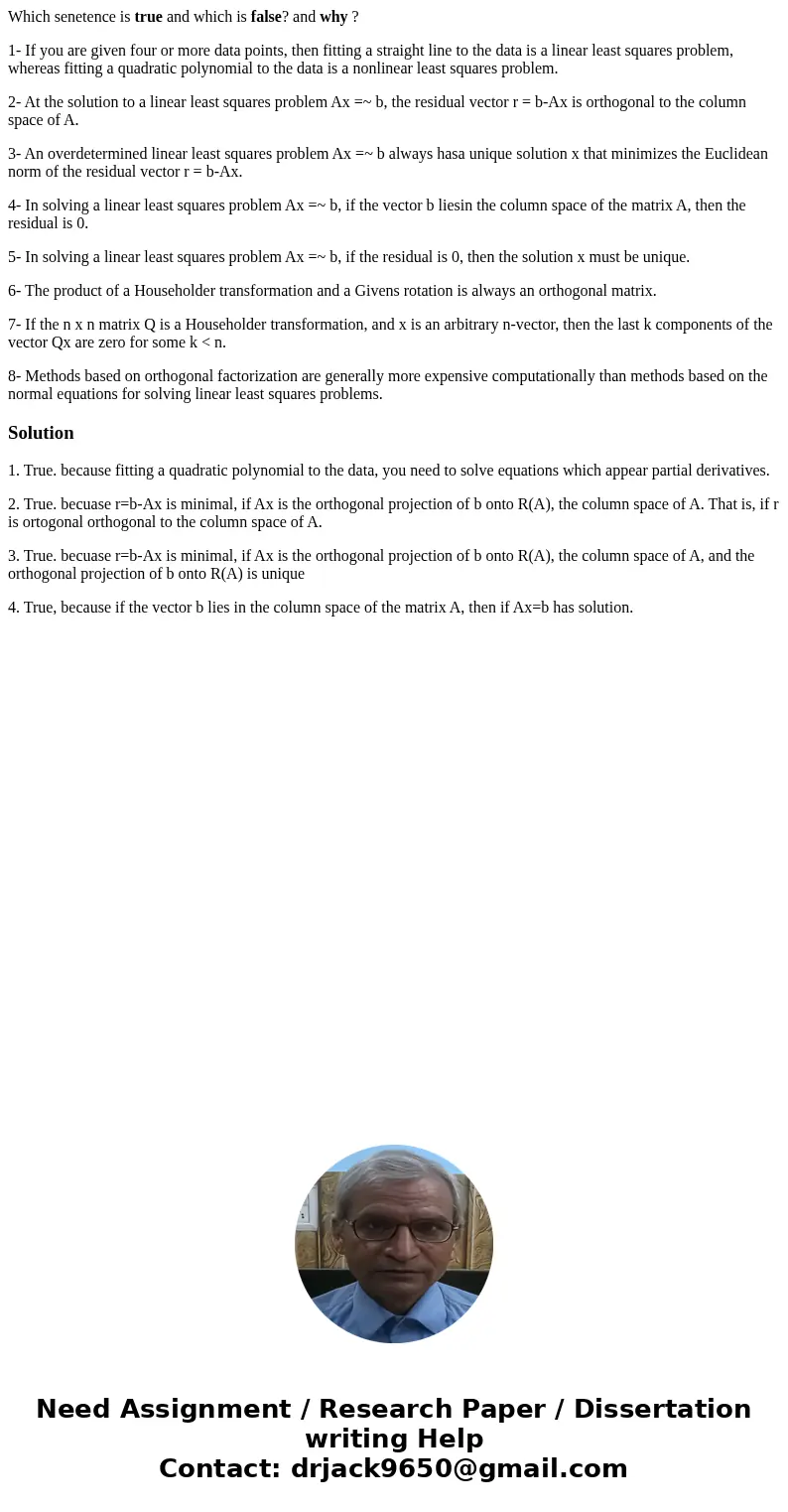Which senetence is true and which is false and why 1 If you
Which senetence is true and which is false? and why ?
1- If you are given four or more data points, then fitting a straight line to the data is a linear least squares problem, whereas fitting a quadratic polynomial to the data is a nonlinear least squares problem.
2- At the solution to a linear least squares problem Ax =~ b, the residual vector r = b-Ax is orthogonal to the column space of A.
3- An overdetermined linear least squares problem Ax =~ b always hasa unique solution x that minimizes the Euclidean norm of the residual vector r = b-Ax.
4- In solving a linear least squares problem Ax =~ b, if the vector b liesin the column space of the matrix A, then the residual is 0.
5- In solving a linear least squares problem Ax =~ b, if the residual is 0, then the solution x must be unique.
6- The product of a Householder transformation and a Givens rotation is always an orthogonal matrix.
7- If the n x n matrix Q is a Householder transformation, and x is an arbitrary n-vector, then the last k components of the vector Qx are zero for some k < n.
8- Methods based on orthogonal factorization are generally more expensive computationally than methods based on the normal equations for solving linear least squares problems.
Solution
1. True. because fitting a quadratic polynomial to the data, you need to solve equations which appear partial derivatives.
2. True. becuase r=b-Ax is minimal, if Ax is the orthogonal projection of b onto R(A), the column space of A. That is, if r is ortogonal orthogonal to the column space of A.
3. True. becuase r=b-Ax is minimal, if Ax is the orthogonal projection of b onto R(A), the column space of A, and the orthogonal projection of b onto R(A) is unique
4. True, because if the vector b lies in the column space of the matrix A, then if Ax=b has solution.

 Homework Sourse
Homework Sourse